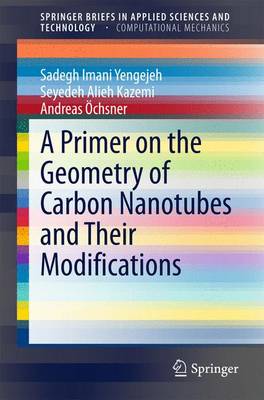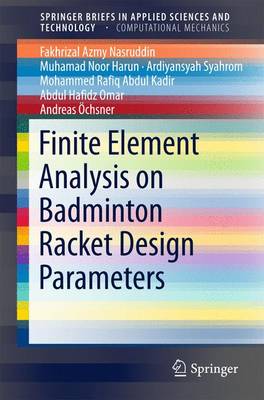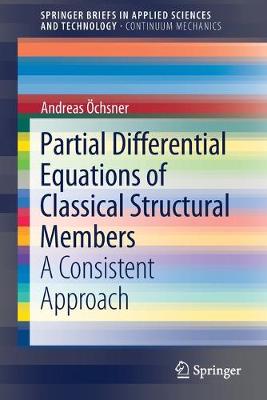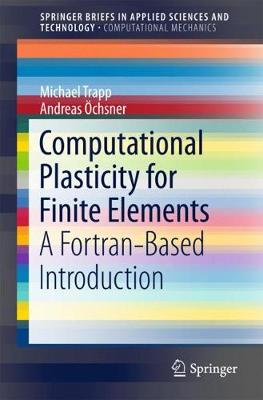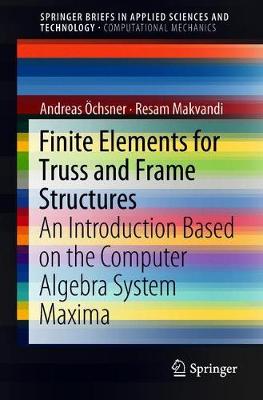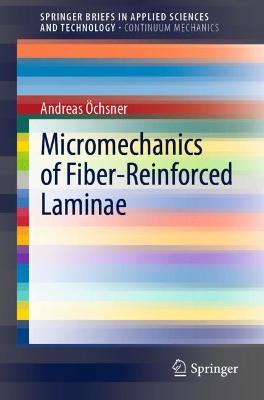SpringerBriefs in Applied Sciences and Technology
6 total works
A Primer on the Geometry of Carbon Nanotubes and Their Modifications
by Sadegh Imani Yengejeh, Seyedeh Alieh Kazemi, and Andreas OEchsner
This volume presents a comprehensive system for categorizing carbon nanotubes and their modifications in terms of nano sheets, nanotubes, microscopic and atomic modifications. In addition, the material and geometric properties of these nano-configurations are addressed. Lastly, it introduces a number of common software packages for geometry generation and several commercial finite element programs.
Finite Element Analysis on Badminton Racket Design Parameters
by Fakhrizal Azmy Nasruddin, Muhamad Noor Harun, Ardiyansyah Syahrom, Mohammed Rafiq Abdul Kadir, Abdul Hafidz Omar, and Andreas OEchsner
This work identifies the characteristics of racket design parameters that influence racket performance. It presents the finite element analysis of several designs of badminton rackets and compares them to experimental results for validation. Designing a racket requires a comprehensive understanding of racket performance characteristics. Essentially, racket performance is related to the sweet spot, which is the spot on the racket head that produces the most power and control when it strikes a shuttlecock. Determining a coefficient of restitution can help to identify the sweet spot on a racket. By analyzing several head shape designs, it becomes apparent that isometric head shape rackets produce better coefficients of restitution compared to oval and round ones. It is recommended that the racket design consist of low string tension, stiffer racket shafts and bigger head size in order to produce higher shuttlecock speed.
Partial Differential Equations of Classical Structural Members
by Andreas OEchsner
The derivation and understanding of Partial Differential Equations relies heavily on the fundamental knowledge of the first years of scientific education, i.e., higher mathematics, physics, materials science, applied mechanics, design, and programming skills. Thus, it is a challenging topic for prospective engineers and scientists.
This volume provides a compact overview on the classical Partial Differential Equations of structural members in mechanics. It offers a formal way to uniformly describe these equations. All derivations follow a common approach: the three fundamental equations of continuum mechanics, i.e., the kinematics equation, the constitutive equation, and the equilibrium equation, are combined to construct the partial differential equations.
Computational Plasticity for Finite Elements
by Michael Trapp and Andreas OEchsner
This volume demonstrates the use of FORTRAN for numerical computing in the context of the finite element method. FORTRAN is still an important programming language for computational mechanics and all classical finite element codes are written in this language, some of them even offer an interface to link user-code to the main program. This feature is especially important for the development and investigation of new engineering structures or materials. Thus, this volume gives a simple introduction to programming of elasto-plastic material behavior, which is, for example, the prerequisite for implementing new constitutive laws into a commercial finite element program.
Finite Elements for Truss and Frame Structures
by Andreas OEchsner and Resam Makvandi
This book is intended as an essential study aid for the finite element method. Based on the free computer algebra system Maxima, the authors offer routines for symbolically or numerically solving problems in the context of plane truss and frame structures, allowing readers to check classical ‘hand calculations’ on the one hand and to understand the computer implementation of the method on the other. The mechanical theories focus on the classical one-dimensional structural elements, i.e. bars, Euler–Bernoulli and Timoshenko beams, and their combination to generalized beam elements. Focusing on one-dimensional elements reduces the complexity of the mathematical framework, and the resulting matrix equations can be displayed with all components and not merely in the form of a symbolic representation. In addition, the use of a computer algebra system and the incorporated functions, e.g. for equation solving, allows readers to focus more on the methodology of the finite element method andnot on standard procedures.
This book provides an introduction to the micromechanics of fiber-reinforced laminae, which deals with the prediction of the macroscopic mechanical lamina properties based on the mechanical properties of the constituents, i.e., fibers and matrix.
Composite materials, especially fiber-reinforced composites, are gaining increasing importance since they can overcome the limits of many structures based on classical metals. Particularly, the combination of a matrix with fibers provides far better properties than the components alone. Despite their importance, many engineering degree programs do not treat the mechanical behavior of this class of advanced structured materials in detail, at least on the Bachelor degree level. Thus, some engineers are not able to thoroughly apply and introduce these modern engineering materials in their design process.
The focus is on unidirectional lamina which can be described based on orthotropic constitutive equations. Three classical approaches to predict the elastic properties, i.e., the mechanics of materials approach, the elasticity solutions with contiguity after Tsai, and the Halpin–Tsai relationships, are presented. The quality of each prediction is benchmarked based on two different sets of experimental values. The book concludes with optimized representations, which were obtained based on the least square approach for the used experimental data sets.
